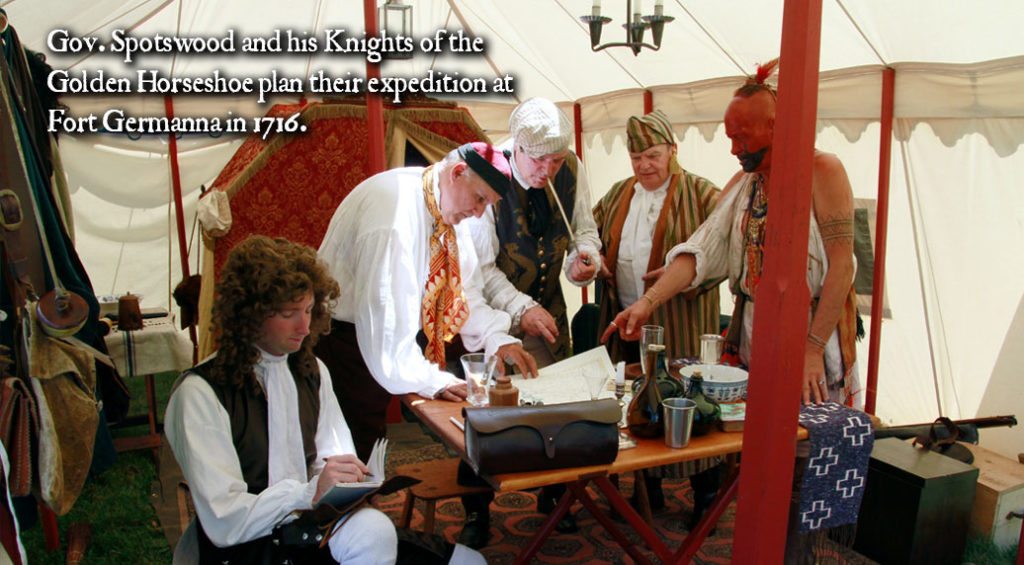 The Germanna Foundation Board of Trustees hosted a living history colonial encampment open to the public at no charge at their Brawdus Martin Visitor Center grounds on Saturday, September 17 and Sunday, September 18, 2016 from 10 am to 4 pm each day.
The Germanna Foundation Board of Trustees hosted a living history colonial encampment open to the public at no charge at their Brawdus Martin Visitor Center grounds on Saturday, September 17 and Sunday, September 18, 2016 from 10 am to 4 pm each day.
This event celebrated the 300th anniversary of the Knights of the Golden Horseshoe Expedition, which took place in August and September 1716 and began and ended at Fort Germanna.
Visitors saw an authentically-recreated encampment of the kind likely to have been established by Colonial Lt. Gov. Alexander Spotswood and his companions on their expedition over the Blue Ridge Mountains.
See photos from the event: Germanna Photos
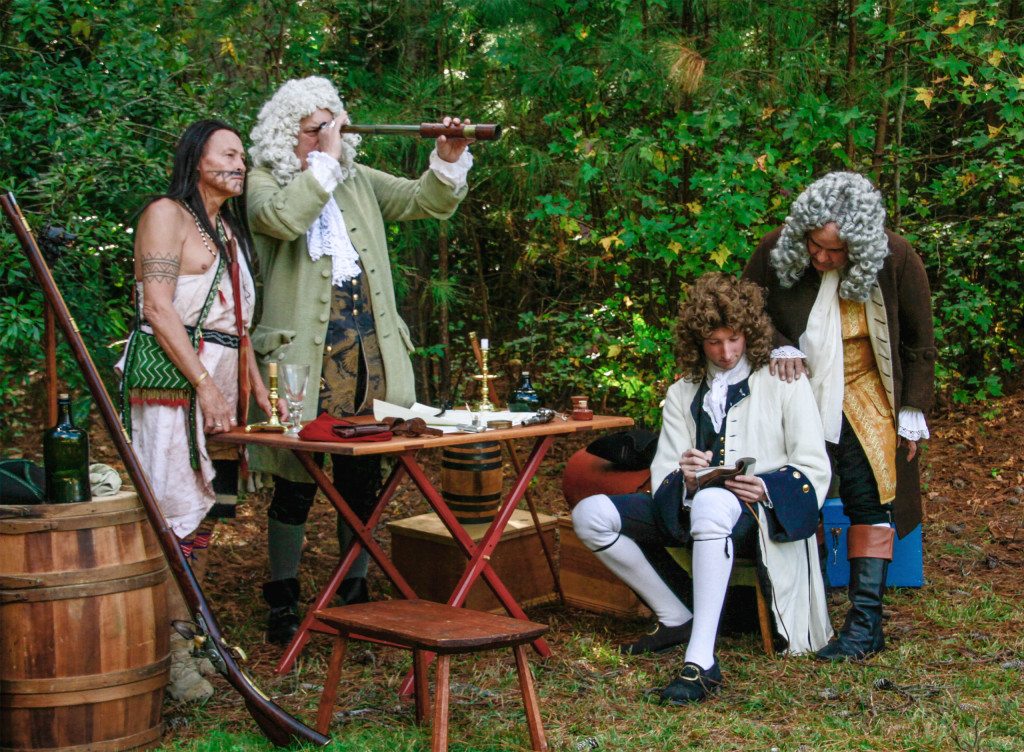 Several re-enactors portrayed some of the participants of that expedition including Gov. Spotswood himself, John Fontaine (from whose diary we owe much of our knowledge about the journey), George Mason III, Captain Jeremiah Clouder, and even a Meherrin Indian guide.
Several re-enactors portrayed some of the participants of that expedition including Gov. Spotswood himself, John Fontaine (from whose diary we owe much of our knowledge about the journey), George Mason III, Captain Jeremiah Clouder, and even a Meherrin Indian guide.
Several others joined them, including Hoffman’s Forge, a working blacksmith operation, and other “Knights” of the expedition, rangers, and some of the German colonists who all of a sudden were joined by this large and diverse group for several days before the journey began some 300 years ago.
This living history encampment helped visitors imagine what this experience must have been like for the Germanna colonists and their families, as well as the colonial gentlemen who met here on the frontier of the Virginia Colony.
 They saw how Spotswood’s party “roughed it” during the expedition, and heard some of the details, and the tales, of the journey dutifully recorded by Fontaine, and which were later expounded upon and embellished in early American literature.
They saw how Spotswood’s party “roughed it” during the expedition, and heard some of the details, and the tales, of the journey dutifully recorded by Fontaine, and which were later expounded upon and embellished in early American literature.
Visitors could take a short hike down the Germanna Foundation’s Red Trail to the “Rapid Anne” River and along the bank, largely untouched these past 300 years.
The sights, smells, sounds and environment, right where this all really happened, brought this legendary, yet largely overshadowed, chapter of Virginian and American history to life in to enjoy and remember.
The Germanna Foundation Visitor Center is located on Route 3 next to the Germanna Community College/Locust Grove campus, 2062 Germanna Highway, Locust Grove, VA 22508. Map
See photos from a small preview re-enactment that took place during the July 2016 Germanna Foundation Conference and Reunion.
The Germanna Foundation is a 501(c)3 nonprofit organization dedicated to honoring the historic heritage of the Germanna colonists and their descendants, through programs of historic preservation and interpretation, genealogical research and publishing, archaeological exploration, and land conservation. The Germanna Foundation has members in all 50 states, Canada, Australia, and Germany.
Background Information
HJ 212 Commending the Knights of the Golden Horseshoe Expedition (Virginia Government)
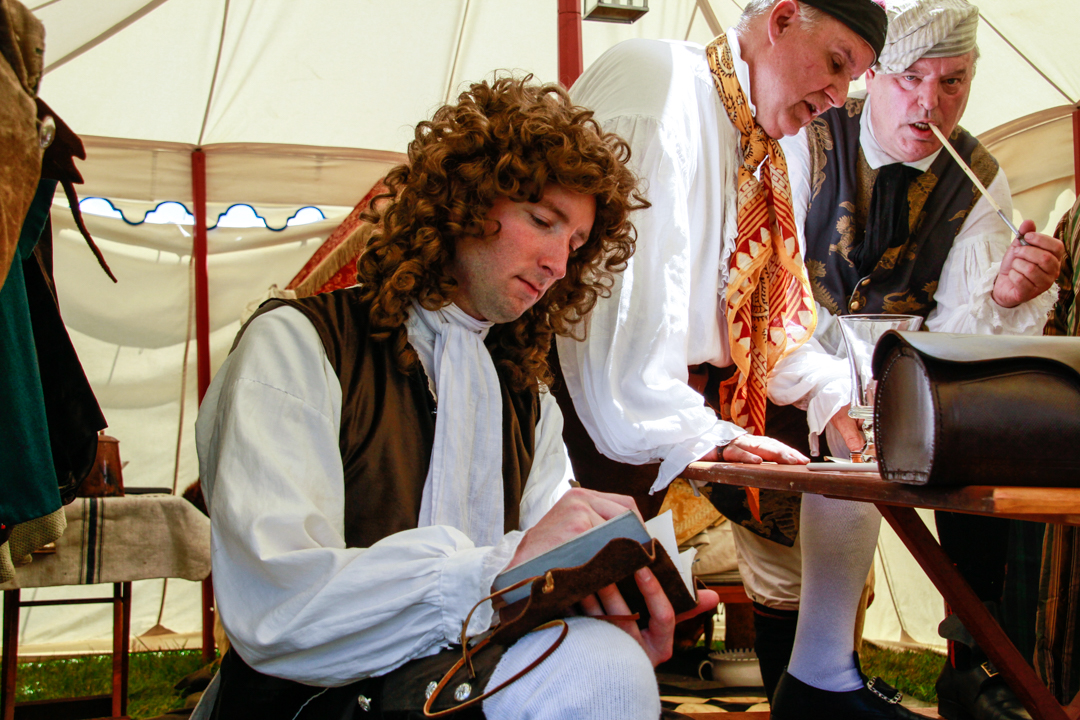
John Fontaine and The First Germanna Colony, Part I (By Craig Kilby, Germanna Foundation)
John Fontaine and The First Germanna Colony, Part II (By Craig Kilby, Germanna Foundation)
This part talks about the KGH Expedition
John Fontaine and The First Germanna Colony, Part III (By Craig Kilby, Germanna Foundation)
John Fontaine’s Journal: Alexander Spotswood’s Transmontane Expedition (West Virginia Culture and History)
Spotswood and His Knights of the Golden Horseshoe Reach the Shenandoah River (Schiller Institute)
. . . Then, in June of 1716, Spotswood informed the Virginia Council that his rangers had found a pass over the Blue Ridge, where even supply trains could cross. The governor therefore recruited a “company of gentlemen,” to prove that the Blue Ridge could be easily crossed. Many of these recruits had sons and grandsons who played important roles in the development of the American Republic. Among them was George Mason, whose son worked with George Washington to draft the Fairfax Resolves, and who designed much of the constitution of the new state of Virginia. Then there was James Taylor, the ancestor of two Presidents—James Madison and Zachary Taylor. Robert Brooke’s grandson became governor of Virginia in 1798, and Thomas Todd’s family helped secure Kentucky for the Americans during the Revolution, and produced a future First Lady for Abraham Lincoln.
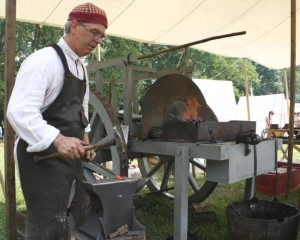
Governor Spotswood led his expedition out of the capital at Williamsburg on Aug. 20, and rode to his ironworks at Germanna, where the group was to join two companies of rangers. There, Spotswood had both the pack horses and riding horses shoed with iron for the journey over the mountains. Up until this time, Virginians had ridden their mounts unshod, because there was little domestic iron and the Tidewater Area had gentle, sandy terrain. The governor wanted to make the point that iron was not only necessary for crossing the mountains, but that it was essential for settlers who would tame the wilderness beyond. . . .
Knights of the Golden Horseshoe Expedition (Wikipedia)
Governor Spotswood’s Expedition to the Blue Ridge – 1716 (Potomac Appalachian Trail Club)
National Order of the Knights of the Golden Horseshoe; instituted 1716, reorganized April 15, 1916:
From the 1916 National Order of the Knights of the Golden Horseshoe:
 Governor Spotswood, man of vision as well as action, dreamed of crossing the Appalachian Mountains and was the first to successfully achieve his purpose.
Governor Spotswood, man of vision as well as action, dreamed of crossing the Appalachian Mountains and was the first to successfully achieve his purpose.
John Fontaine, who accompanied the expedition, wrote of the adventure; Hugh Jones, A. M., chaplain of the “Honorable Assembly” and minister at Jamestown, Va., retold the picturesque narrative in 1724; Howe the historian, Edward Ingle of Baltimore, and many others to whom the adventure made appeal, told the story, each in his own way. From these painters of past events is glimpsed a picture of Governor Spotswood and John Fontaine setting gayly out, on August 20, 1716, to attempt that which had hitherto been deemed impossible.
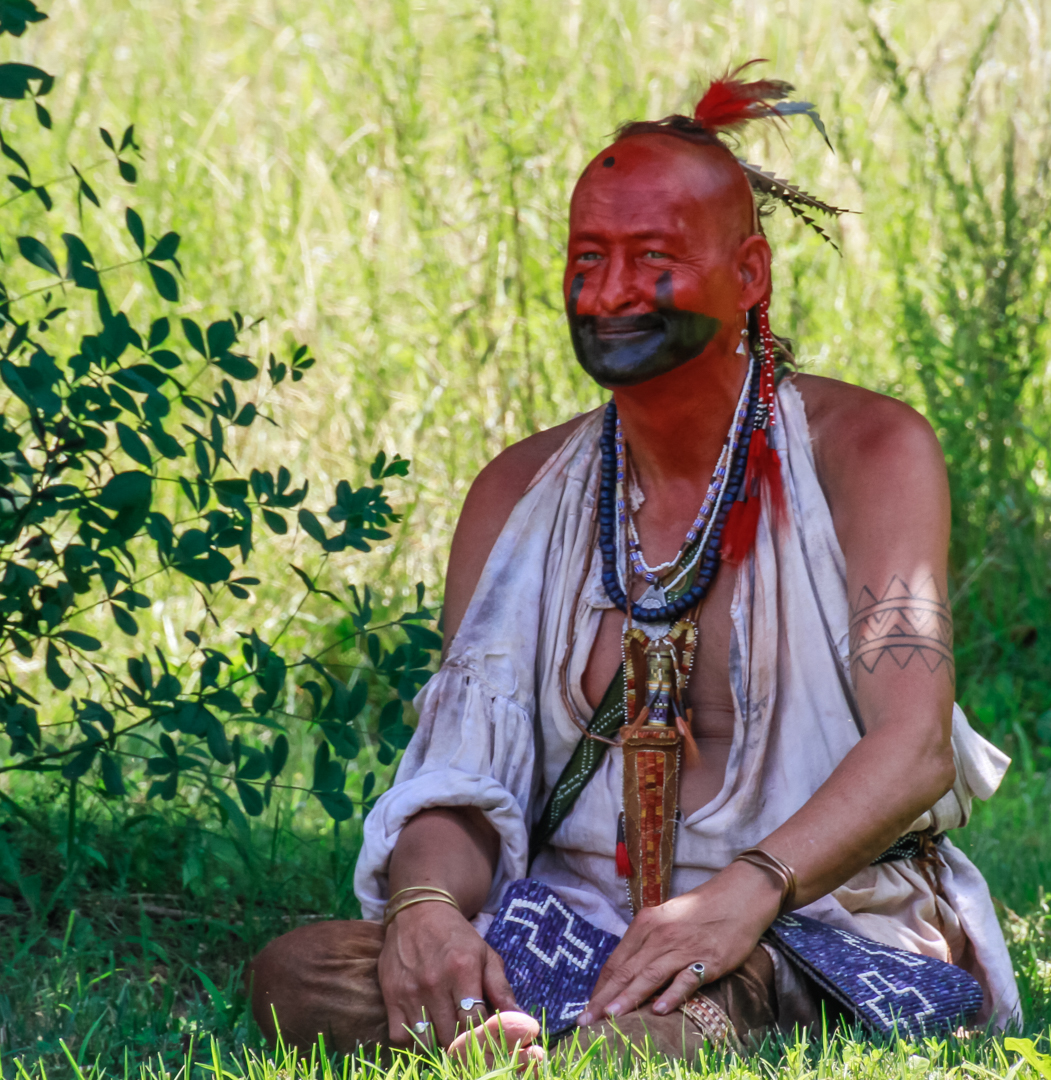 They were joined en route between Williamsburg and Germanna by several gentlemen, 14 rangers and 4 Meherrin Indians. They carried ample provisions and did not lack liquid refreshment, for their scribe enumerates “white and red wine, asquebaugh, brandy shrub, two kinds of rum, champagne, canary, cherry punch and cider.”
They were joined en route between Williamsburg and Germanna by several gentlemen, 14 rangers and 4 Meherrin Indians. They carried ample provisions and did not lack liquid refreshment, for their scribe enumerates “white and red wine, asquebaugh, brandy shrub, two kinds of rum, champagne, canary, cherry punch and cider.”
Before beginning the ascent, the well-mounted, well-armed company had their horses shod, horses being accustomed to traverse the low country, where there were few stones, without shoes, and then camping and eating and drinking by night and pressing sturdily on by day the party finally reached the mountain’s summit, where they cut his Majesty’s name upon the rock of the highest peak, naming it Mount George, in honor of their sovereign, King George I, and the next highest peak Mount Alexander, in honor of Governor Spotswood.
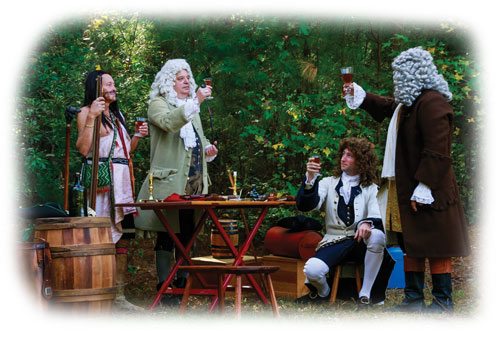 Finally they descended to the Valley of the Shenandoah, loaded their muskets and feasted. They drank the health of the King in champagne and fired a volley; the health of the Princess in burgundy and fired a volley; the health of all other members of the royal family in claret and fired a volley, and wound up by drinking to the health of the energetic Governor who had led them to the promised land — not forgetting the volley.
Finally they descended to the Valley of the Shenandoah, loaded their muskets and feasted. They drank the health of the King in champagne and fired a volley; the health of the Princess in burgundy and fired a volley; the health of all other members of the royal family in claret and fired a volley, and wound up by drinking to the health of the energetic Governor who had led them to the promised land — not forgetting the volley.
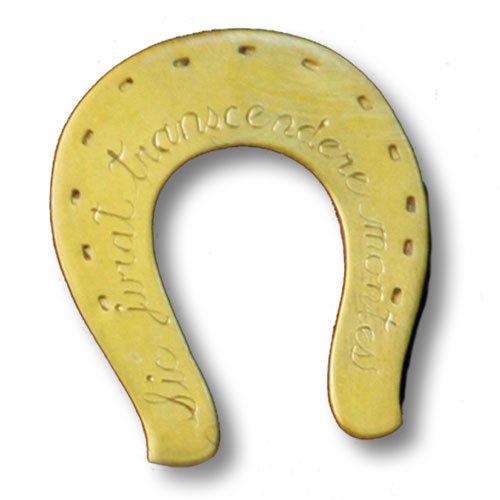 And then they rode homeward as cheerily as they had set out reaching Williamsburg on September 17, and having traveled many miles. To commemorate the event and encourage new enterprises and settlements westward, Governor Spotswood gave to each of the company a miniature golden horseshoe, set with garnets to represent nail heads. Upon each was the inscription “Sic juvat transcendere montes” (Thus it is delightful to cross the mountains).
And then they rode homeward as cheerily as they had set out reaching Williamsburg on September 17, and having traveled many miles. To commemorate the event and encourage new enterprises and settlements westward, Governor Spotswood gave to each of the company a miniature golden horseshoe, set with garnets to represent nail heads. Upon each was the inscription “Sic juvat transcendere montes” (Thus it is delightful to cross the mountains).
Thus the members of the expedition were known as the “Knights of the Horseshoe” and any gentleman entitled to wear this golden horseshoe proved he had drunk his Majesty’s health upon the summit of Mount George.
The Original Knights of the Horseshoe (from the 1916 National Order of the Knights of the Golden Horseshoe):
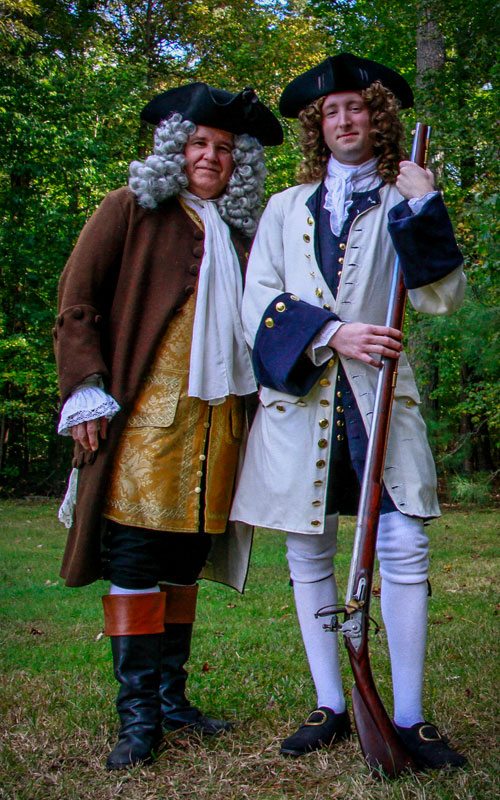 Governor Alexander Spotswood
Governor Alexander Spotswood
Robert Beverley I of Middlesex
Benjamin Harrison
Francis Brooke
Captain Jeremiah Clouder
John Fontaine
Captain George Mason III
Colonel William Robertson
Dr. Robinson
Mr. Todd
William Clopton, Jr.
William Russell
Austin Smith
James Taylor
Peter Berkeley
William Beverley
Theodorick Bland
Thomas Bray
William Byrd
Kit Carter
Nathaniel Dandridge
Dudley Digges
Dr. Evelyn
Thomas Fairfax
John Fitzhugh
Henry Hall
George Hay
Joe Jarvis ( scout )
Rev. Hugh Jones
Francis Lee
Henry Lee
Charles Ludwell
Charles Mercer
Bernard Moore
William Moseley
John Munroe
Alexander Nott
Mann Page
Edmund Pendleton
John Peyton
John Randolph
Edward Saunders
Peyton Skipwith
John Washington
Ralph Wormley
George Wythe
Oliver Yelverton
